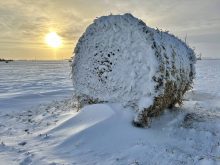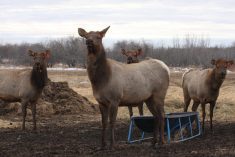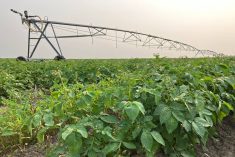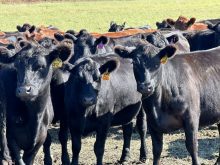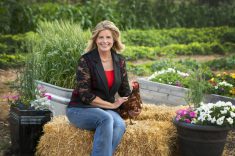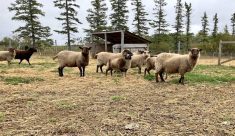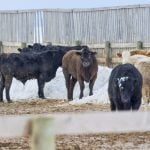Alberta’s irrigation districts are getting a $5.5 million boost to an annual cost-share program for modernizing and rehabilitating infrastructure.
The boost brings the districts’ total 2024 share to $19 million through the irrigation rehabilitation program (IRP), an agreement between the Alberta government, which contributes 75 per cent, and irrigation districts who fund the other 25 per cent.
David Westwood, general manager of the St. Mary River Irrigation District, said the additional funds bring the grant closer to where it was before cuts in recent years.
Read Also

The long march to autonomy
The big players in the machinery market keep adding pieces towards autonomous vehicles for farming, but how far away is a final product?
“It’s very welcomed, obviously. The funding increase is returning the IRP back to getting close to the levels that it was about seven to 10 years ago.”
Three districts contacted by Alberta Farmer Express identified plans for ongoing replacement of open canals with enclosed pipelines. Pipelines reduce water lost through seepage and evaporation. In 2022, about 9.2 kilometres of open canals were converted to pipeline under the program.
“A typical rehabilitation project would consist of converting on open canal system to a closed gravity PVC pipeline,” wrote Eastern Irrigation District general manager Ivan Friesen in an email. “The efficiency gains that have been achieved over the decades of this program has allowed districts to increase the irrigated area while using the same amount of water.”
These efficiencies also help districts adapt to variable climate, enhancing water security, he added.
Lethbridge Northern Irrigation District general manager Chris Gallagher said “this translates to drought resilience and staged expansion using a portion of our saved water and ultimately better crop yield and quality through improved service to our irrigators.”
The St. Mary River Irrigation District draws from the Belly, Waterton and St. Mary rivers. It is using IRP funding to replace the spillway that fills the Chin reservoir east of Lethbridge. The structure is being built in conjunction with the Raymond Irrigation District.
The existing spillway was built in the 1950s and has come to the end of its design life, said Westwood. The new structure is being built with major flooding in mind.
“It’s a larger scale in the sense it can handle larger volumes of water, so if we see significant flooding events, we can move as much (water) as we can.”
Completion is scheduled for fall 2025, said Westwood.
The biggest challenge for producers in the SMRID is doing more with less water. Like the other 10 irrigation districts that draw water from the South Saskatchewan River Basin, the SMRID agreed in April to reduce water use if there are severe drought conditions in this growing season.
These non-legally binding memorandums of understanding expire Dec. 31.
The SMRID is starting with an allocation of eight inches per acre at the farm gate with periodic reviews throughout the summer. A normal year would see an allocation of about double that amount. The number was determined based on summer meteorological forecasts, said Westwood.
Water allocations at the farm gate are determined by irrigation district boards. Alberta Environment and Protected Areas provides input.
Parts of southern Alberta received rain throughout May. More rain may replenish dwindling irrigation supplies, allowing the SMRID to increase its allocation. However, Westwood remains cautious.
“We’ll continue to monitor it throughout the irrigation season to see if we have the ability to increase it but we’d have to get some pretty significant precipitation,” he said.
Irrigation water supply will depend largely on mountain runoff, said Westwood. Snowpacks trended on the low side throughout the winter, but the slower the melt, the better.
“I think if we continue with these cooler temperatures, especially in the evening, it allows the snowpack to melt off in a nice gradual fashion into June and possibly make it all the way to July. That would be very beneficial for providing water longer into the irrigation season.”
SMRID irrigators are planning ways to manage less water, said Westwood. Much of that comes down to seeding choices. A popular option is to plant more cereals than usual and divert a portion of allocations for water-dependent special crops such as potatoes or sugar beets.
Meanwhile, Friesen asks “what drought?” when questioned on how the Brooks-headquartered Eastern Irrigation District — bounded by the Bow River in the south and the Red Deer River in the north — plans to deal with it this year.
“Today, the area within the EID has seen precipitation that is well above normal and not seen in quite some time, in the order of 100 millimetres more than 2023 at this time of year, and well above the long-term average for this time of year,” wrote Friesen May 21, citing results from the Brooks water measurement station.
“The challenge today in the EID is to complete seeding as some seeding has been delayed because of the wet conditions. June … is often our wettest month.”
The Lethbridge Northern Irrigation District is planning a preliminary eight-inch-per acre allocation, said Gallagher. As in the EID, wet fields have hampered some farmers’ ability to meet target seeding windows.
The LNID provides irrigation water on the north side of the Oldman River between Fort Macleod and Turin.
Producers plan to manage their risk through crop selection, rotation and insurance, wrote Gallagher. Although recent rain and mountain snowpack favour an improved situation over last year, the district still has a long way to go in terms of water storage.
However, Gallagher said one challenge been fixed. Last year a leak at the diversion from the canal system that feeds into the LNID reduced access to water.
“We have been advised that leaks on the Lethbridge Northern Headworks Canal have been addressed, with appropriate monitoring in place to evaluate performance as flows increase through the irrigation season,” wrote Gallagher.
“We are able to receive delivery from Alberta Agriculture and Irrigation through the headworks system without constraints associated with the Lethbridge Northern Headworks Canal.”
He added that the IRP will support replacement of existing, district-owned infrastructure downstream of the Keho Reservoir outlet. Funds will not be used for repairs to the headworks.




